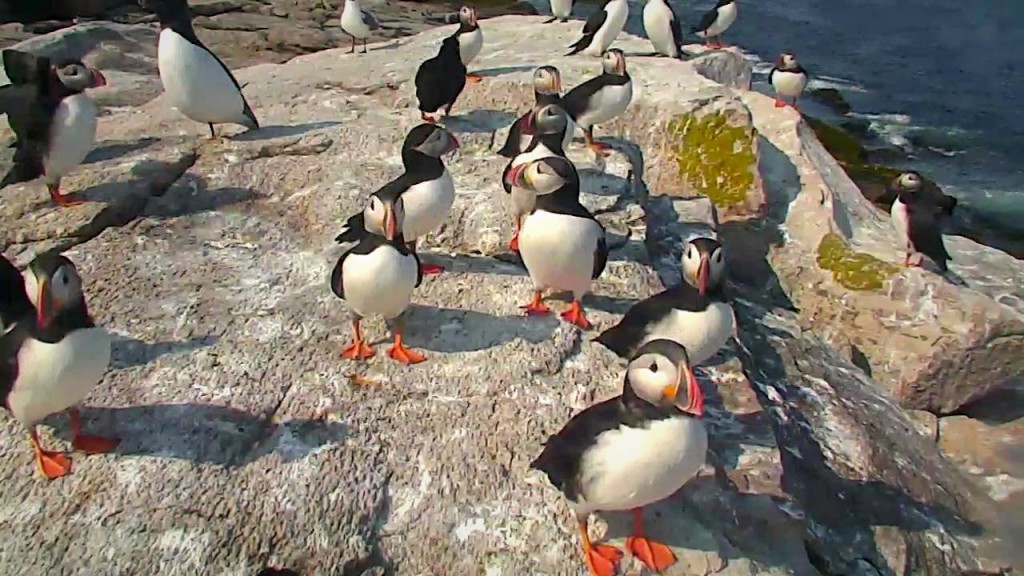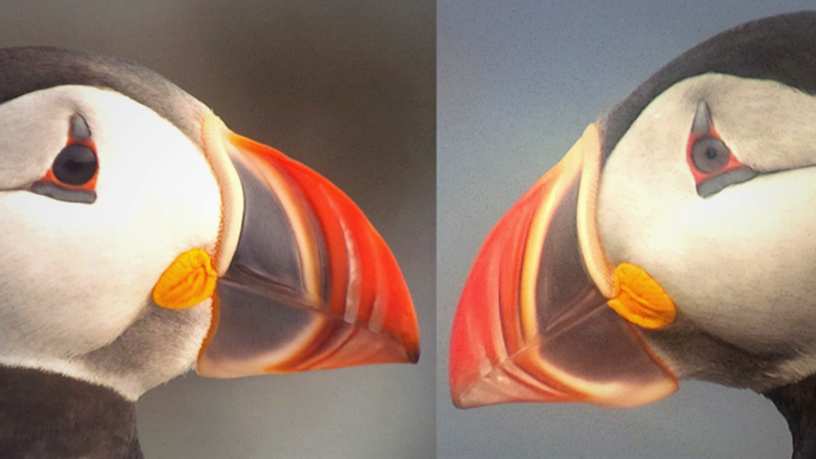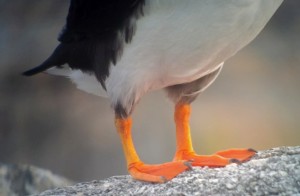Project Puffin Research Intern Aubrey Alamshah shares her puffin-watching experiences while working on Maine’s Eastern Egg Rock Island.
“One thing I would never have known had I not spent so many hours looking at puffins through high-powered scopes is how different they all are. Humans like to make sweeping generalizations about people and animals alike, and we often refer to creatures like puffins in regard to their entire species. But puffins, like people, are individuals, and nothing highlights that fact like meticulously watching a puffin colony for hours every day.
One thing that really struck me was the difference in eye color. I’ve always thought of different eye colors as a human thing, with the occasional dog or cat having unique eyes because we bred them that way, but puffins have evolved a vast range of eye colors all on their own. I first noticed this when I focused my scope on one particular puffin to try and read his leg band. After I had recorded only two of the letters on his band, however, he promptly sat down on his feet, leaving me to sit there and wait for him to get back up so I could continue recording his bands. As I sat there staring at my uncooperative subject, however, I noticed he had the most striking, sky-blue eyes. “Funny” I thought to myself, “I never realized how pretty puffin eyes were”. I panned over to another puffin, only to realize his eyes were a deep, chocolatey brown. Scanning the entire colony, I saw an entire range of color, from slate gray to deep ocean navy, stormy silver-blue to almost black.
Of course, I couldn’t spend all my time looking at puffin eyes. My job was to look at puffin bands, which are wrapped around puffin legs. As researchers we use the bands to tell the puffins apart, but spend enough time looking at puffin feet and you almost don’t need the bands at all, they’re all so different and unique. Some are pale, almost yellow at the legs and get darker at the webbing.
Others are bright, traffic-cone orange all over. Some have developed thick calluses on the back from years of sitting on jagged ledges and rocky burrows, or from the repeated rubbing of a metal band placed on them by a researcher many years ago. Some are oddly shaped from injuries that have healed over, others are missing a part of their webbing, an unfortunate souvenir from some unhappy accident. Each pair of little orange feet tells a story, some spanning decades, and each is a little bit different than all the others.
One thing anyone who has worked with puffins will tell you is that they are full of personality. Those personalities, of course, also differ from puffin to puffin. Some puffins seem to always be in a hurry, scurrying and hopping from rock to rock, burrow to burrow, perpetually late for some puffin business I know nothing about. Others are cautious, placing each foot down slowly and deliberately, and always stopping to double-check the distance between rocks before jumping lest they end up stuck in a crack.
All these different personalities make puffin-watching incredibly entertaining. It would be interesting to come back again next year and see how the puffins have changed. Do puffins get more confident, more self-assured with more experience? Or are some just naturally shy, curious, or bold? I get a different answer from every researcher I ask. Some confident puffin personalities don’t change, others a little less sure, but curious to do more research and find out. It’s funny, but sometimes I feel like puffins and people aren’t all that different.”





